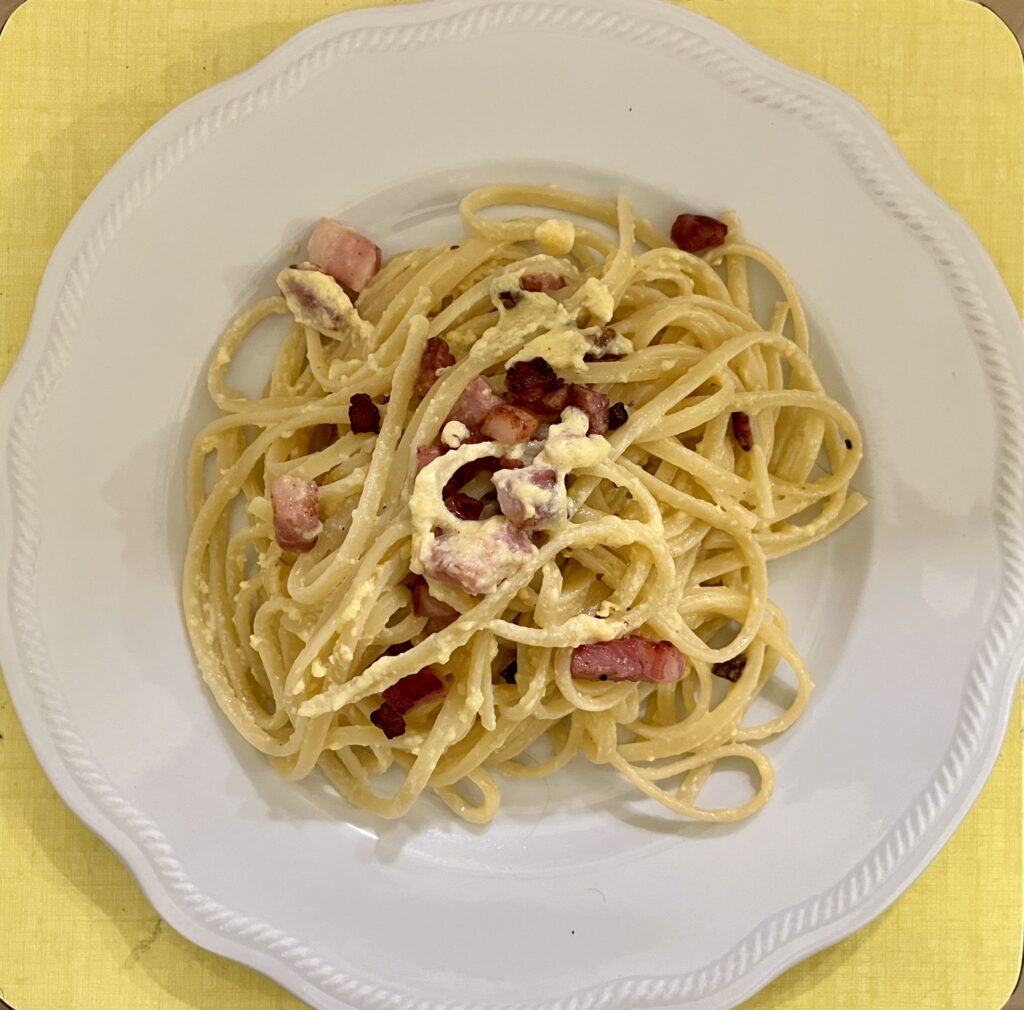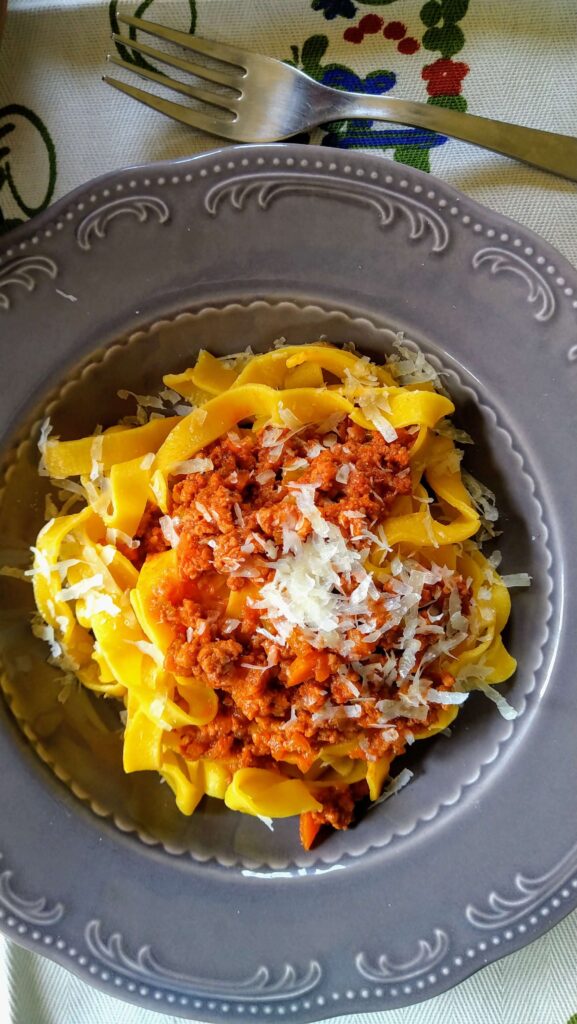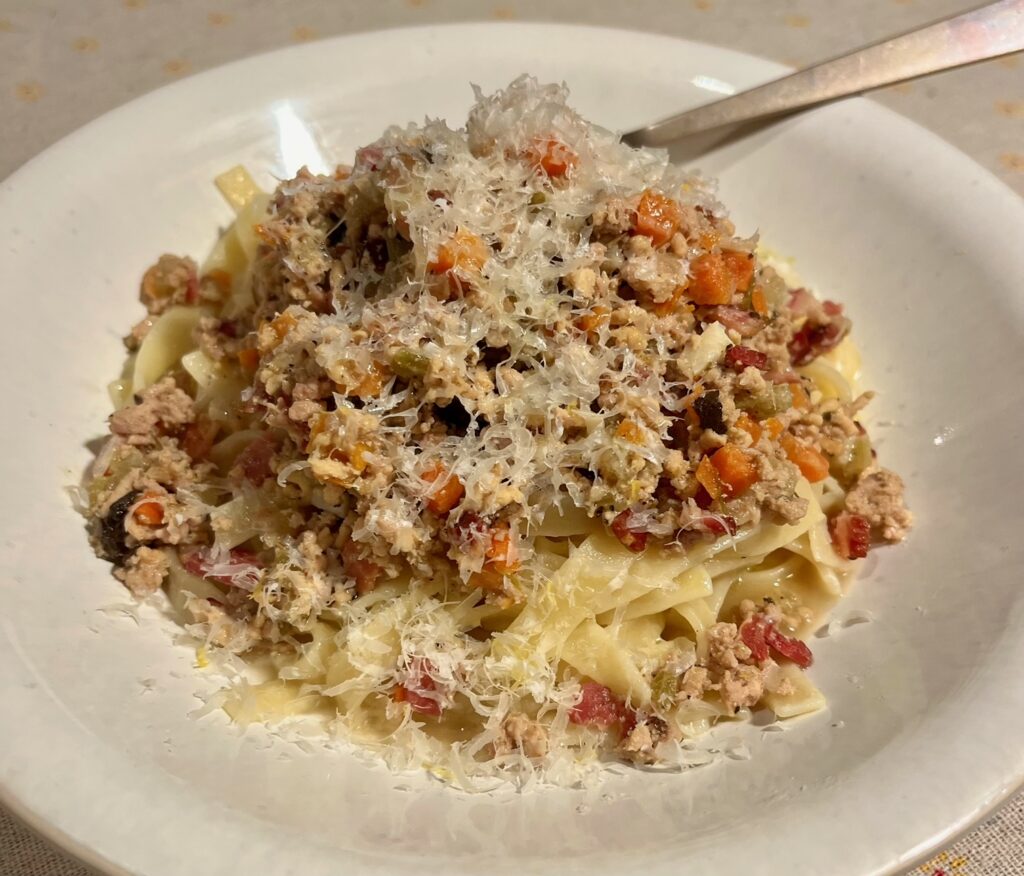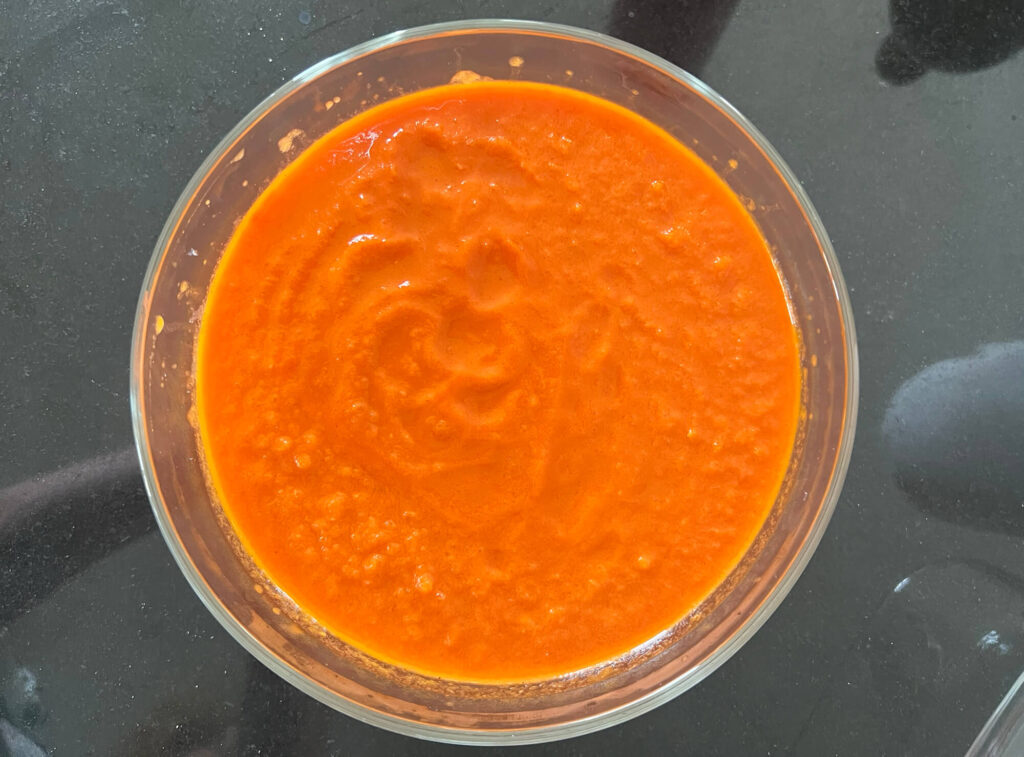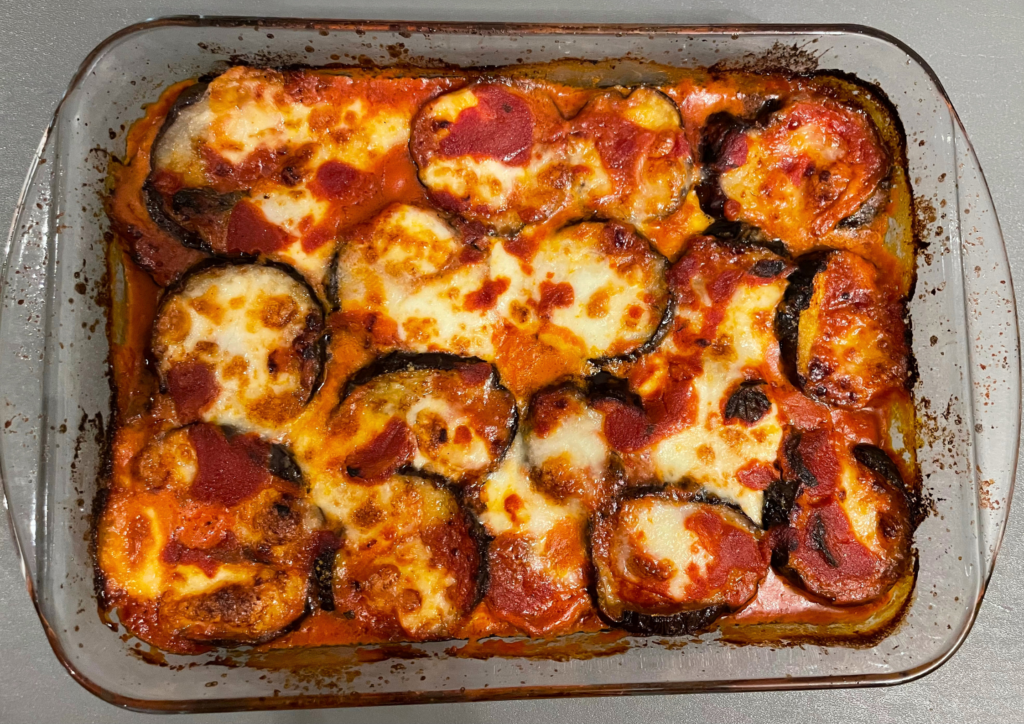Cesaria’s Lorighittas with Chicken
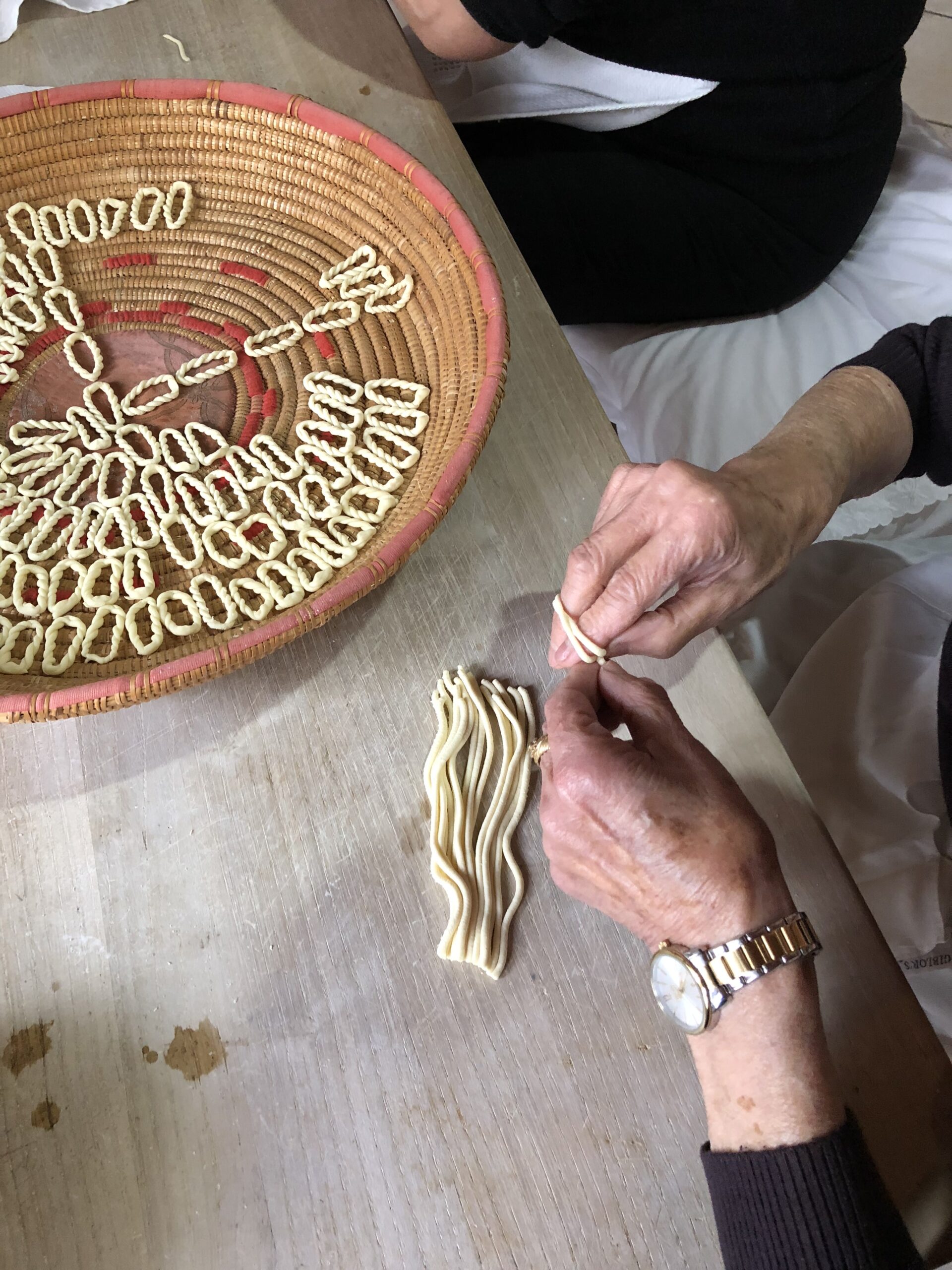
Morgongiori is a little village on the western side of central Sardinia, and it is the only place on the island—and indeed the whole of Italy—where loringhittas are made. These double-hooped, twisted strands of thin, spaghetti-shaped pasta are made for eating on All Saints’ Day, 1 November. In the days and centuries before radio, TV, and mobile phones, making loringhittas was an opportunity for women to get together to gossip and sing. They would start production after the feast of Santa Sofia in mid-October, and even today no one has found a way to mechanize the process. Cesaria, who is 95, is able to roll fine strands even though, she says, the flour isn’t the same as it used to be. The traditional sauce for this pasta is made with a young rooster. Autumn was the reason to dispatch cockerels that were surplus to requirements before they reached sexual maturity.
- 75 mins
- Expert
- Serves: 4
Ingredients
For the pasta
- 2g (½ teaspoon salt)
- 200ml warm water
- 400g finely ground semolina flour
For the chicken sauce
- 3 tablespoons extra-virgin olive oil
- 1 onion
- 2 garlic cloves, minced
- 8kg free-range , organic chicken, jointed into 8 pieces.
- 50ml (3 tablespoons) white wine
- 750g passata (sieved tomatoes)
- 20g parsley
- chopped salt
To serve
- Grated Pecorino Sardo
Method
For the dough:
- Allow 45–50 g tepid water for every 100 g semola rimacinata (semolina flour). Incidentally, the volume of the water is the same as the weight: 45.50 ml, but scales are more accurate than measuring jugs. Add 4 g salt to a liter of warm water. Salt is not there for flavour; it helps to make the gluten strands slide along one another better.
- Either use a bowl or heap the flour onto your board. Using your fingers, make a well and pour in the amount of water you need. Mix the flour into the water, making sure you mop up all the excess flour.
- Knead the dough for 5 minutes. You want a dough that is silky and not sticky to the touch. It won’t have the soft, pillowy feel of an egg-based pasta dough, but it will feel nice and plastic—and you can use it immediately; there’s no need to leave it to rest. If you knead the dough for longer, it will develop some elasticity, and then you will have to let it rest for 20 minutes or so.
- To make the pasta, dissolve the salt in the water. Some cooks like to add salt directly to the flour, but Cesaria likes to pat salted water onto the dough if it’s too dry. Cesaria advises not to try to make this pasta when the weather is hot and dry.
- Keep the dough covered while you are making the pasta shapes to stop it from drying out.
- Take small chunks of the dough and roll each one into a spaghetti strand 2.5 mm in diameter—getting the strand this thin takes a little bit of practice. Snip the strand into 20 cm (8 in) lengths and roll it twice around 3 fingers (if they are fairly small) and pinch the ends together.
- Pinch off any excess. Hold the loop at the join and twist it with the other hand as if you are winding a watch. It helps to watch Cesaria’s video on YouTube. Remember, this is a group activity, so get the family involved to work your way through the dough. The women of Morgongiori place the loringhittas on large flat baskets to dry—but a tea towel will do.
For the chicken sauce:
- To make the chicken sauce, heat the oil in a casserole or Dutch oven and soften the onion for 5 minutes before stirring in the garlic.
- Cook the mixture for a minute or so more before adding the chicken pieces, wine, and passata. There is no need to brown the chicken pieces first.
- Add a pinch of salt, cover with the lid, and let everything simmer for a good 45 minutes.
- Add the parsley at the end of the cooking.
- Remove the chicken pieces; they can either be served alongside the pasta or do as the Sardinians do and serve it as a main course after the pasta.
- Bring a large pan of salted water to the boil.
- Add the loringhittas and cook for about 8–10 minutes.
- Drain them and then dress them with the Pecorino and stir through the tomato sauce. The loringhittas are now ready to be eaten, with or without the chicken.
Our other recipes
Free
Team's recipes
Tagliatelle is one of the simplest pasta to make and a staple of Emilia-Romagna; everyone knows how to make it! Growing up, my grandmother used to make the most delicious ragù and homemade tagliatelle, filling our kitchen with the comforting aroma of simmering meats and fresh pasta.
- 3 hrs
- Medium
- Serves: 6
Free
Team's recipes
This recipe is one of my go to dishes to cook when I have friends coming round for dinner at the last minute and I want to try to impress them while still doing something simple, but delicious!
- 55 mins
- Easy
- Serves: 3-4
Free
Team's recipes
This is my easy-peezy, chuck-it all in tomato sauce. you can use fresh flavoursome tomatoes in summer but in winter it’s better to use tinned whole tomatoes.
- 30 mins
- Easy
- Serves: 4
Free
Team's recipes
A simple but classic recipe—there’s nothing more classic than aubergine parmigiana. It’s the only vegetable dish, especially with eggplants, that I can get my partner to eat.
- 45 mins
- Easy
- Serves: 4
